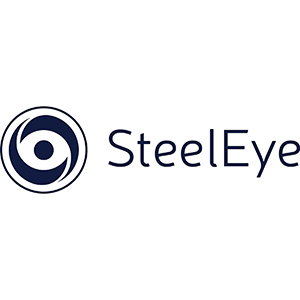Reaping the Benefits of Unified Data: why Integrated Surveillance is a Journey not a Solution

- Matt Smith, CEO at SteelEye
- 06.07.2021 09:45 am #data #analysing #compliance
Integrated (or ‘Holistic’) Surveillance has been a hot topic in the industry for several years because of the view that bringing together diverse data sets and analysing them holistically will lead to enhanced risk mitigation and business insights.
Consequently, many larger firms, particularly on the sell-side, have started to invest in the area. However, due to the significant investment required to get it right, many smaller firms have not yet started to develop an integrated data programme for surveillance. Yet, in this digital world effortless access to information is key for agility as it allows firms to quickly identify opportunities. Scattered data on the other hand impacts the time it takes to respond to threats, market movements and regulatory changes.
To stay ahead of the curve, firms will have to start to seriously think about how to bring together data such as transactions details, communications, market data and more. It requires investment as there are no quick fixes, but when executed correctly, Integrated Surveillance is a great opportunity to establish a rich, value-adding data set that can power entire organisations.
As with almost all compliance requirements, it is all about data – and data is forever changing and growing. As such, Integrated Surveillance needs to be approached as a journey instead of a solution.
Investing intelligently in Integrated Surveillance
Integrated Surveillance has received increased attention over recent years, and we are seeing a clear desire among firms to become more holistic in their approach. However, unless firms can fundamentally combine infrastructure and data in a scalable manner, Integrated Surveillance has limited business value.
Because of the sheer volume and scale of data produced today, and the number of existing and new platforms and systems that process this data, a superficial, patchworked solution for managing different data sources is not sustainable.
If Integrated Surveillance is approached purely for the purpose of improving risk detection – this does not justify the huge investment required to successfully integrate complex data sets. However, if firms think about how to build long term capabilities for combining data for the wider purpose of organising information – this has substantial value in terms of opening opportunities in other parts of the business.
Regulators favour integrated data
While regulators do not specify that surveillance needs to be carried out holistically, they are increasingly interested in seeing firms adopt a more integrated framework for dealing with data. This pressure will only increase as technology evolves and regulators themselves enhance their data management capabilities.
Firms need to think strategically about the data-driven technologies they require in order to combine vast volumes of information, so they can reap the long-term benefits of an integrated approach.
A successful programme needs to be scalable and embed the ability for firms to change, grow and ingest new data sources, platforms, and systems over time. Firms that have not started their journey to build out integrated capabilities should certainly start planning for this now.
How to get Integrated Surveillance right
One of the most important aspects of getting an integrated programme right is figuring out how different data sets meet and interact. How do you overlay LEIs, with trader IDs, chat profiles and phone numbers so that a link can be established? This is an extensive data mapping exercise that many have tried and failed at.
Most traditional RegTech or surveillance vendors approach regulatory requirements from the perspective of the output – what firms need to report or store. As a result, many have devised prescriptive and inflexible data schemas that financial institution must meet before their data can be ingested, and a platform or tool used. This approach is expensive, resource intensive and makes it very difficult for firms to get a return on their investment.
With growing data volumes and varying formats, the key is to work with technology that can ingest data in any format, that can also capture new channels and sources quickly. Another key consideration as firms try to combine data that has a different format is how to ensure all the relevant meta data is captured and nothing missed. With a rigid data schema, it is nearly impossible integrate new formats that do not fit the prescribed template – or guarantee that everything is being captured.
However, there are data-driven platforms that can automatically determine the common denominators and key differentiators between different data types, and then link data together using the commonalities while also bringing in the unique fields. The use of Artificial Intelligence or Machine Learning can thereafter learn what a piece of data is meant to look like, so that flags can be raised when there is a change.
Technology has a significant role to play in facilitating Integrated Surveillance and while many vendors still have some way to go in their ability to make sense of vast volumes of data, there are solutions and platforms that already enable firms to take a more futureproofed holistic approach.



















